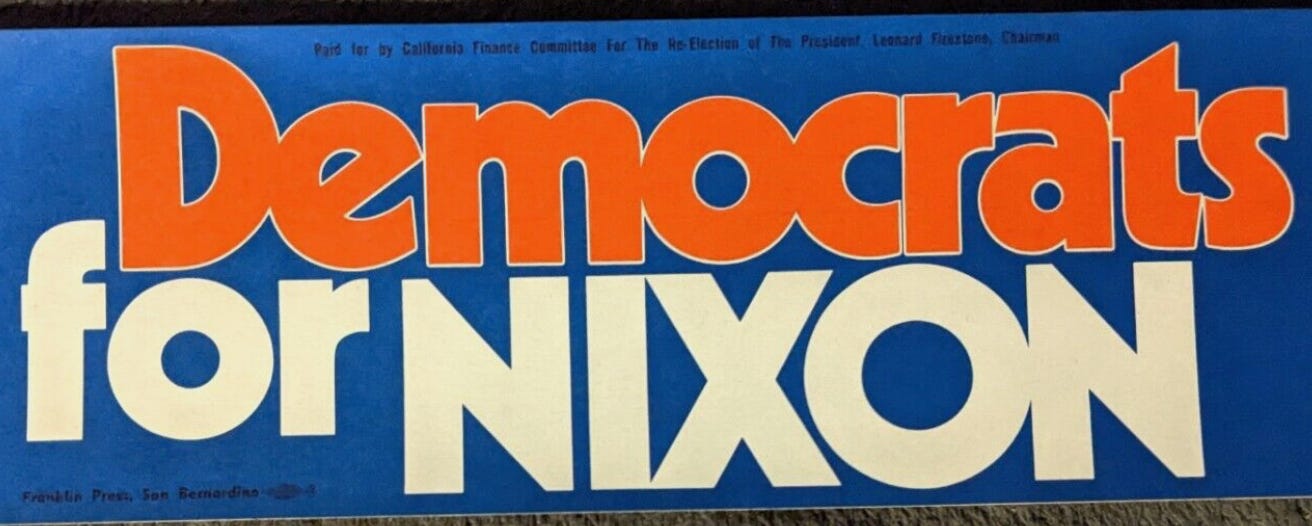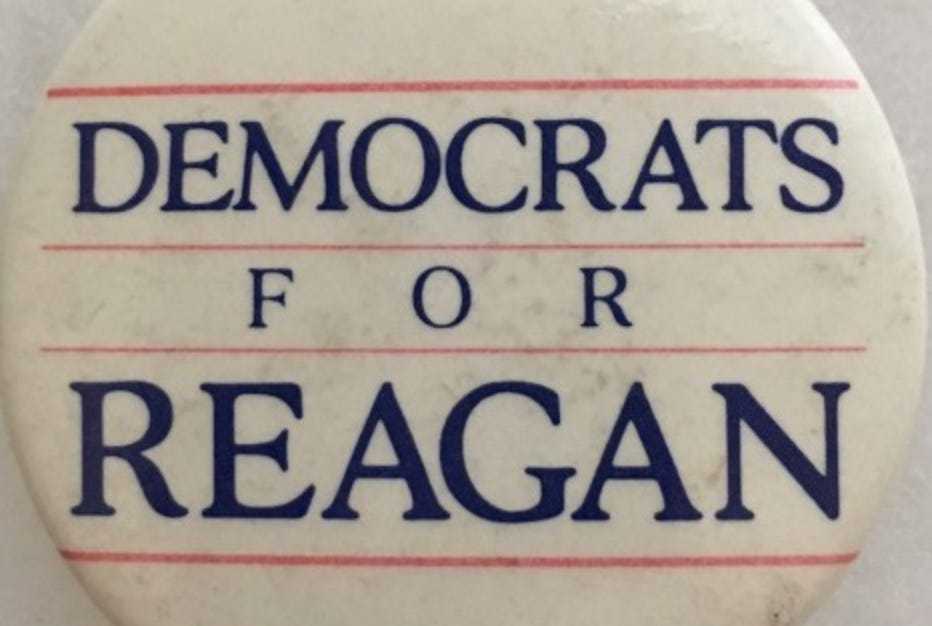Before I dig into my topic today, I wanted to apologize for the relatively light posting the last month. I’d planned on posting more as we hit the homestretch of the presidential campaign, but a recent family tragedy — a swift decline in my mom’s health and then her passing a few weeks ago— made that impossible. While it’s been an incredibly rough few months, I feel like I’m getting my feet back under me now.
In recent weeks, there’s been a considerable bit of grumbling on the left about the endorsement of Kamala Harris by several prominent Republicans, most notably former Vice President and future War Criminal Hall of Fame inductee Dick Cheney.
And, look, as someone who spent the better part of the George W. Bush era screaming in the general direction of Washington, D.C., I completely understand the discomfort some people are feeling. Dick Cheney is someone whose beliefs and actions have been diametrically opposite of mine on just about every issue imaginable.
Except, it seems, on the one that really matters this election — the preservation of our democratic institutions.
As much as I despise Dick Cheney and, to a lesser degree, some of the other high-profile Republicans who have signaled their support for the Democratic ticket this year, I’m glad to see that they’re making a public stand (and yes, taking a personal risk) by breaking ranks with their party and urging Americans to vote for Kamala Harris.
Just because Dick Cheney has been wrong on every other issue doesn’t mean he’s automatically wrong here. (See the image above.) And just because Dick Cheney has expressed his support of Kamala Harris, that doesn’t mean those of us who generally go the other way on issues should reconsider our support either. As I joked with Ana Marie Cox in our conversation yesterday, Dick Cheney likes to breathe oxygen and consume food too. There are some basic things we can actually agree on.
And settling our differences within the boundaries of our democracy is an important one, and one that should be embraced by a disparate group of Americans from across the political spectrum. A Republican hatchet man like Dick Cheney acknowledges it’s important; so does a Marxist academic like Angela Davis. Those two might be polar opposites in a traditional political debate, but the one thing they agree upon is that we should still have traditional political debates.
What’s happening here is we’re seeing a range of political figures acknowledge that whatever their differences, they agree on the preservation of our political structures and constitutional norms. They agree that a second Trump term would be a disaster unlike any the country has seen before, and possibly bring the end of it all. (When Trump himself is suggesting these things, it’s easy to understand how erstwhile enemies have now made common cause.)
And that’s a key point here. This is Dick Cheney endorsing the campaign of Kamala Harris, and not Kamala Harris endorsing the politics of Dick Cheney. She didn’t change her views on any policy or (as far as I can tell) make any promises on staffing in order to secure that endorsement. It came with no strings attached.
Yes, Harris said she’d appoint a Republican to her Cabinet, another predictable move from a politician in the home stretch of a presidential campaign. This again set off considerable panic in the online left, who apparently imagined she might make Lindsey Graham her attorney general or something, but it’s almost certainly going to be something minor. (Former Representative Adam Kinzinger, who spoke at the convention, running the VA would be my guess, but it could also be a former governor in charge of Commerce or something.)
Despite the howls of indignation over these small gestures of outreach to Republicans, they are in fact small gestures. They don’t mean that Kamala Harris is selling us out. They simply mean that Kamala Harris is actually trying to win the election.
We live in a deeply divided country, and nowhere is that more apparent than in the partisan divide that has increasingly locked Americans into color-coded teams of Red and Blue. But that only means that a perennial pressing concern of presidential campaigns — the need to peel voters away from the other party and welcome them into your own fold — is even more pronounced.
And since I’m a political historian, I’ll end with this reminder: Every landslide victory in modern American history had this kind of outreach to voters in the other party.
Franklin D. Roosevelt welcomed Progressive Republicans into the New Deal, making Harold Ickes a key figure of his Cabinet and working closely with figures like NYC Mayor Fiorello LaGuardia. When WWII loomed, he even made Hoover’s former Secretary of State his new Secretary of War and appointed the Republican vice presidential nominee in 1936 as the important Secretary of the Navy. He made those moves in the heat of the 1940 campaign, and it worked wonders.
Lyndon B. Johnson did the same thing a quarter-century later. In the 1964 campaign, he worked tirelessly to win over moderate Republicans who felt that the stark conservatism of Barry Goldwater was a bridge too far. Democrats made a serious push, captured in this famous ad:
Richard Nixon and Ronald Reagan, of course, famously played this same game in reverse.
Nixon actively recruited Democrats, not just through the “southern strategy” that sought to win over segregationists upset with their party’s new embrace of civil rights, but also through an outreach to the white working-class union members who had long formed a core of the New Deal coalition.
His 1972 landslide re-election wouldn’t have happened without Democrats breaking ranks in large numbers, and it’s safe to say that if it hadn’t been for Watergate, his vision of a “New American Majority” under the banner of the GOP might well have come true.
And of course Reagan did the same thing. A former Democrat himself, he told Democrats that the party had already left them behind, so they might as well reciprocate and leave it too. His successful capture of so many of the same voters that had broken to Nixon in 1972 gave us the category of “Reagan Democrats” — a category that proved so durable it remained a shorthand in political analysis for decades after they helped him reach his own landslide re-election win in 1984.
And on and on.
So it’s no surprise that Kamala Harris is accepting and even promoting the fact that some Republicans are supporting her campaign, and making some small gestures of invitation and inclusion for Republicans too. Honestly, it’d be surprising and alarming if she weren’t doing these things.
But please remember — just because she’s making political room for Republicans does not in the slightest mean that she’s making policy concessions to Republicans.
FDR and LBJ sought Republican support and, once they’d secured landslides with their votes, blazed ahead with the New Deal and Great Society. Nixon and Reagan wooed Democrats and, once they’d secured landslides with their votes, pushed ahead with their own programs of conservatism.
Winning over large numbers of voters — yes, even the worst people you know! — isn’t a sign that your policy preferences are going to be abandoned. Far from it. It’s a sign that the candidate is doing everything they can to make sure they win the election in convincing style so that those policy preferences are actually enacted.







One educational deficiency of young, left-wing citizens is not understanding that elections are not about expression. They are, without exception, about choosing the least aversive option. Surprisingly, this isn’t intuitive. I was young once, needed to be taught.
So sorry for your loss.
Sorry to hear about your mom. May her memory be a blessing.